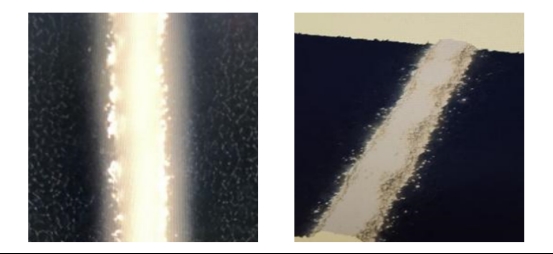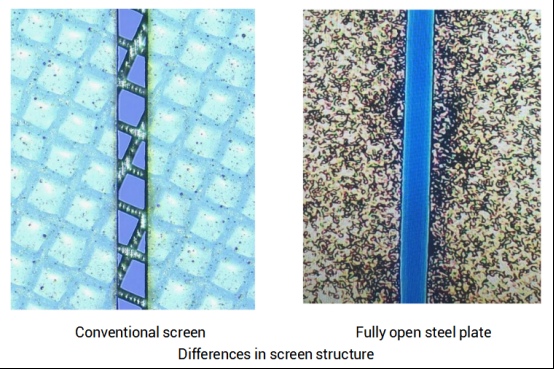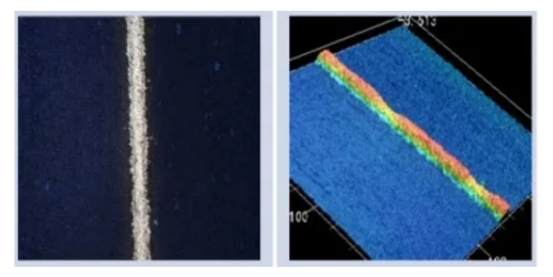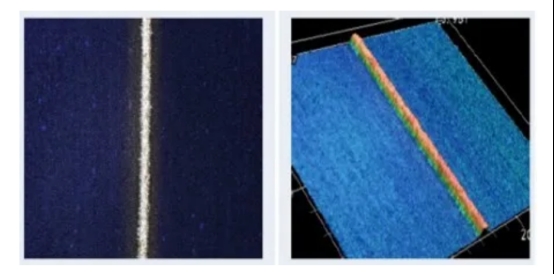The screen used in the screen printing process is a key consumable in the photovoltaic industry. It is mainly used for electrode formation and conductivity improvement. The paste (such as silver, aluminum, etc.) is accurately pressed on the silicon wafer through screen printing to form an electrode structure. This component will greatly affect the width and appearance of the fingers after printing and the amount of silver paste used, which in turn affects the cost of the cell and the photoelectric conversion efficiency.
With the continuous advancement of technology and the diversification of market demand, solar cells of different specifications and models have different requirements for screens and processes. After many years, the traditional screen structure and process material combination have become very mature and fixed, which has also led to limited upgrade space, so it has gradually been unable to meet the needs of the new wave of the photovoltaic industry.
To change this situation, photovoltaic companies have developed a disruptive fully open screen based on nanoimprinting and micro-nano electroforming processes since 2022 and have achieved great success: compared with the traditional screens currently used in the industry, fully open screen can save about 20 million yuan in silver paste consumption per GW or increase conversion efficiency by 0.1%~0.5%.
The concept of fully open screen
"Fully open" usually refers to the design characteristics of the screen, that is, the holes of the screen are completely through, without any obstruction. This design is to optimize the deposition effect of the conductive paste during the printing process, making the printed pattern clearer and more consistent.
Fully open screen features
1. Full penetration: The opening area on the screen directly penetrates the material to form a completely open channel. The conductive paste (such as silver paste) can pass through these openings completely without scraping or additional squeezing.
2. No-clogging design: The opening edge is smooth, without partial obstruction or residual material, avoiding slurry accumulation or clogging.
3. High-precision manufacturing: The shape and position of the opening are very precise to ensure that the width, thickness and spacing of the conductive line meet the design requirements.
Core advantages of fully open screen printing
Traditional screen printing is a printing method that uses the principle that the mesh holes in the pattern area can pass through the slurry and the non-pattern area can block the slurry. The traditional screen printing is composed of a steel mesh, a PI film and a photosensitive adhesive. The steel mesh is a criss-cross mesh structure woven to support the PI film; the PI film is engraved with the grid pattern to be printed. Compared with traditional screen printing technology, fully open screen printing technology has obvious differences and advantages in the following aspects:
1. Different materials
The traditional screen uses a composite structure of a steel wire base covered with a layer of photosensitive agent or PI (polyimide) film, as shown in Figure 1. The traditional screen structure will hinder the slurry from falling, affecting the line width and line appearance and slurry dosage; while the fully open steel plate uses a flat, super-strong alloy steel sheet as the raw material. The high strength, high stability, high wear resistance, and high corrosion resistance of the steel plate material itself can ensure the stability of the steel plate screen size, and the printing life of the steel plate is higher than the current mainstream PI screen in the market.
It is worth mentioning that the fully open screen printing technology is also different from the traditional screen technology. The traditional screen is formed by depositing nickel to form a nickel alloy plate by electroforming; while the new generation of screens is formed by physical, chemical and other processing methods on the basis of alloy steel sheets to form a uniform sub-grid, which has more advantages in material strength.

Differences in printing morphology (left: fully open steel plate + low-temperature silver paste; right: conventional screen + low-temperature silver paste)
2. Different structures
The fingers of traditional screens are attached to the silk screen. The mesh nodes or steel wires of the silk screen will block the screen from penetrating the slurry, causing the fingers to fluctuate and widen after printing, affecting the electrical performance.
The finger part of the fully open steel plate is a 100% unobstructed structure, the screen can penetrate the slurry more smoothly, the fingers are flatter and more uniform, so that the morphology of the fingers can be optimized and the electrical performance can be improved.

The core advantages of the fully open screen include:
1. Reduce slurry consumption and metallization costs
The fully open screen can greatly increase the slurry transmittance, reduce the slurry usage by up to 20%, and significantly save metallization costs. According to actual measurement data from leading photovoltaic companies, silver paste consumption can be saved by approximately 20 million yuan per GW.
2. High-precision printing to improve photoelectric conversion efficiency
According to customer feedback, the fully open screen technology has achieved a printing line width of about 24μm on HJT cells and 13μm~15μm on TOPCon cells. After testing, the fully open screen printing limit can reach 10μm line width. Thinner fingers reduce the light-shielding area on the cell surface and increase the photoelectric conversion efficiency. According to the verification results of many photovoltaic companies, the photoelectric conversion efficiency can be improved by 0.10% to 0.50%.

The left picture shows the cross section of the finger under traditional screen printing; the right picture shows the cross section of the finger under fully open screen printing
3. Improve printing quality and reduce resistance
As shown in Figure 4, the finger height is uniform and flat after fully open screen printing. Compared with traditional screens, the surface is smoother, which can reduce finger resistance and increase the fill factor (FF) of the cell. A higher fill factor allows the cell to output more stable power in the application, and the overall performance is further improved.

The fingers of traditional screen printing are burred and the lines are uneven and undulating.

Fully open screen printing has fewer finger burrs and smooth lines without fluctuations.